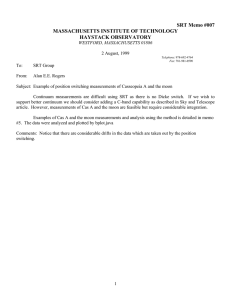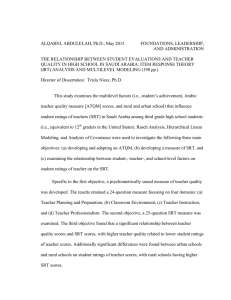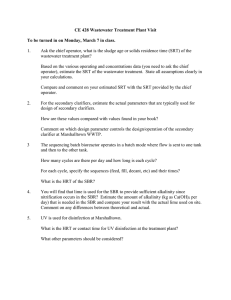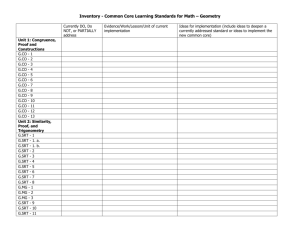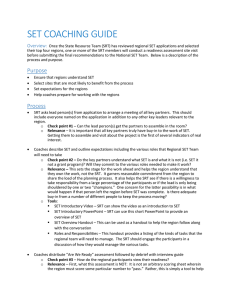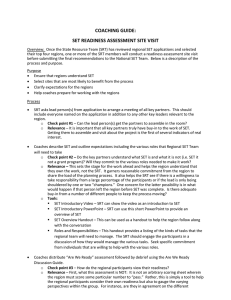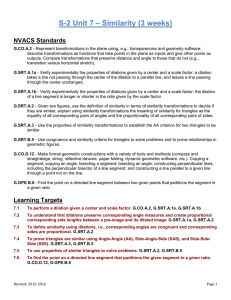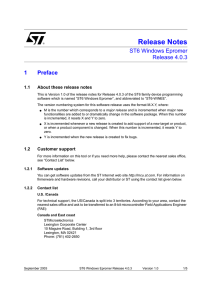SRT Memo #008 MASSACHUSETTS INSTITUTE OF TECHNOLOGY HAYSTACK OBSERVATORY
advertisement
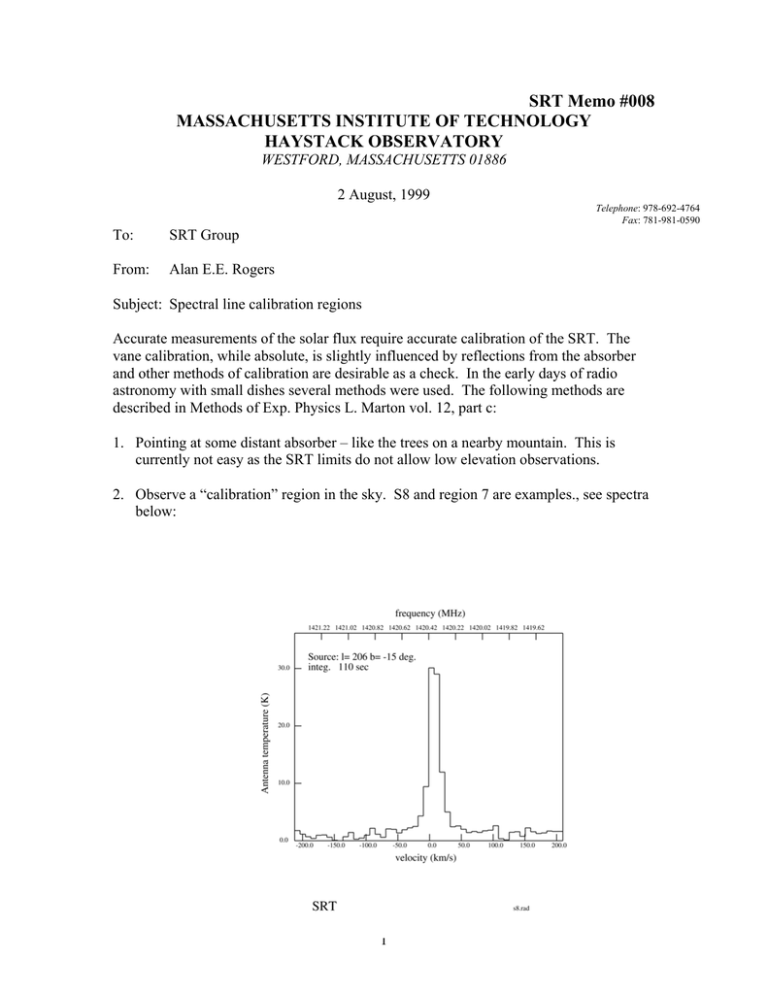
SRT Memo #008 MASSACHUSETTS INSTITUTE OF TECHNOLOGY HAYSTACK OBSERVATORY WESTFORD, MASSACHUSETTS 01886 2 August, 1999 Telephone: 978-692-4764 Fax: 781-981-0590 To: SRT Group From: Alan E.E. Rogers Subject: Spectral line calibration regions Accurate measurements of the solar flux require accurate calibration of the SRT. The vane calibration, while absolute, is slightly influenced by reflections from the absorber and other methods of calibration are desirable as a check. In the early days of radio astronomy with small dishes several methods were used. The following methods are described in Methods of Exp. Physics L. Marton vol. 12, part c: 1. Pointing at some distant absorber – like the trees on a nearby mountain. This is currently not easy as the SRT limits do not allow low elevation observations. 2. Observe a “calibration” region in the sky. S8 and region 7 are examples., see spectra below: 1 Comments: S8 This region is sufficiently extended for the SRT – but the 50 kHz resolution of the SRT is not sufficient to resolve the line peak so the integrated intensity should be used. Integrated intensity observed. (30 + 30 + 10 + 12) x 8 = 650 ± 50 K km/s Standard value from ref 1 Estimated beam efficiency 783 K km/s 83 ± 10% Region 7 This region has a relatively weak H-line but is much more extended and is therefore less likely to be influenced by pointing errors. The nominal peak temperature (after baseline subtraction) should be about 2 K. The observed intensity integrated over velocity is (3.3 + 1.6 + 1.8) x 8 = 53 ± 10 Standard value for ref 2 estimated beam efficiency 60 K km/s 90 ± 10% Reference: 2 1. D.R.W. Williams, “Studies of four regions for use as standards in 21-cm observations,” Astron. Astrophys. Suppl. 8, 505-516, 1973. 2. GT. Wrixon, “ 3
